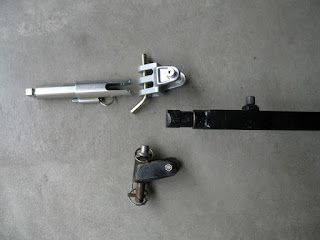At our usual winter location of Yuma, AZ, since late October '23 to today, April 2, 2024. The season is winding down and we begin preparations for the return trip to Colorado. Phrynie, our faithful Orion, has mostly been parked in the Resort storage lot. She only got exercised once last week when I drove it a few miles into town for an appointment and to fill her gas tank. I have regularly run the generator every month.
We have reached the decision to offer Phrynie for sale after our return to Colorado. It is hard to consider after so many good years of travel and enjoyment, and our long-time ownership of all types of RVs. I estimate we have spent at least two years of our married life in an RV. I can't estimate the tens of thousands of miles traveled; maybe a hundred thousand to most of the states and five Canadian provinces. The factors now are our age, increased costs of insurance, taxes, maintenance, and most everything else connected with RV travel. And frankly, I am getting weary of maintaining the equivalent of three houses and three motor vehicles. I believe we will find other travel adventures, and we can always rent if the RV travel bug bites us bad enough.
So, a well-maintained and much-loved 2017 Coachmen Orion 24RBT for Transit Class C motorhome with relative low mileage will be available for sale around the end of May.
One final detail. A few folks have asked how I mounted the shelves in the rear side compartment. I used the wire shelf mounting brackets as shown in the photo and screwed them into the side and rear walls as shown in the picture. I put a dab of epoxy glue on each, but I'm not sure if the glue sticks well to that kind of plastic. At any rate, no problems or loosening have developed, and I put a fair load on the shelves.










































